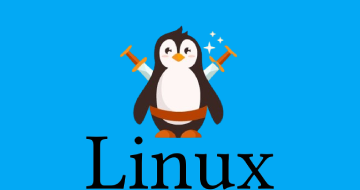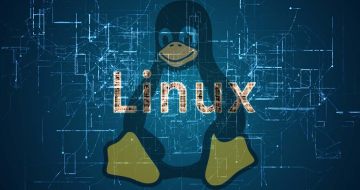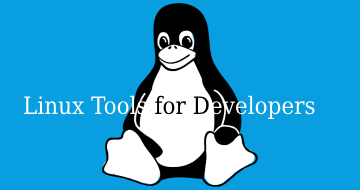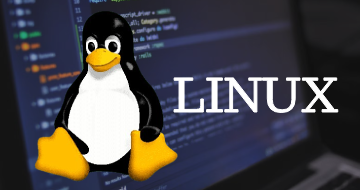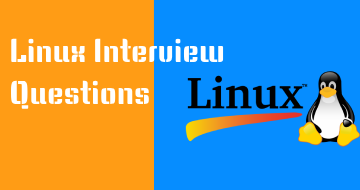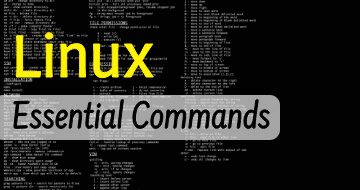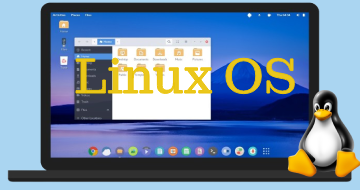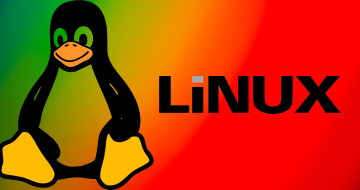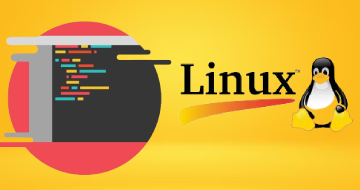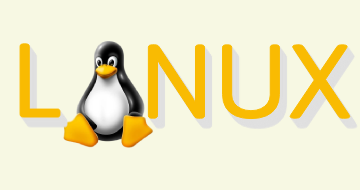IIRF Online > IT & Software > Operating Systems & Servers > Linux > Complete Linux Training Course to Get Your Dream IT Job 2024
Complete Linux Training Course to Get Your Dream IT Job 2024 by Udemy
The BEST Linux Administration course for corporate jobs and RHCSA, RHCE, LFCS, LPIC and CompTIA Linux+ certifications
Course Highlights
- By the end of this course you will be a professional Linux administrator and be able to apply for Linux jobs
- You will be able to take the EX-200 exam and become Redhat Certified System Administrator (RHCSA - EX200)
- You will learn 200+ Linux system administration commands
- CentOS, CentOS Stream and RedHat version 7, 8 and 9
- You will gain advance Linux systems administration skills and have deep understanding of Linux fundamentals and concepts
- You will be able to troubleshoot everyday Linux related issues
- You will manage Linux servers in a corporate environment
- You will write basic to advance level shell scripts
- This course will prepare you for CompTIA Linux+ (XK0-004) and LPI Linux Essentials
- Understand the concept of permissions and how to set them for files and directories
Skills you will learn!
Curriculum
5 Topics
Introduction
Great News
Syllabus Overview
Download Syllabus
Thank You
12 Topics
Welcome to Module 1
Everyday Linux
What is Operating System?
What is Linux?
History of Linux
Linux vs. Unix
Linux flavors
Linux Users
Linux vs. Windows
Module 1 Quiz
Module 1 Homework
Module 1 Handouts
21 Topics
Welcome to Module 2
Lab Design
What is Virtual Box?
Downloading and Installing Oracle VirtualBox
Download and Install VMWare Player (Optional)
CentOS vs. CentOS Stream
Different Ways to Install Linux
Creating a Virtual Machine
Download and Install Linux (CentOS 7)
Download and Install Linux (CentOS 8)
Download and Install Linux (CentOS 9)
Option 2 - Linux Installation on Cloud
Message for Redhat Installation
Redhat Linux Installation (Optional)
Ubuntu Linux Installation (Optional)
Take a snapshot of VM
Virtual Machine Management
Keyboard Keys Used in Linux
Module 2 Quiz
Module 2 Homework
Module 2 Handouts
23 Topics
Welcome to Module 3
Important Things to Remember in Linux
Access to Linux System
Download and Install Putty
Access Linux via Putty or SSH command line
Command Prompts and Getting Prompts Back
Introduction to Linux File System
FileSystem Structure and Description
File System Navigation Commands (cd ls and pwd)
Linux File or Directory Properties
Linux File Types
What is root?
Changing Password
Absolute and Relative Paths
Creating Files and Directories (touch cp vi mkdir)
Copying directories
Finding Files and Directories (find locate)
Difference Between Find and Locate Commands
WildCards (* ? ^ [])
Soft and Hard Links (ln)
Module 3 Quiz
Module 3 Homework
Module 3 Handouts
28 Topics
Welcome to Module 4
Linux Command Syntax
Files and Directory Permissions (chmod)
File Permissions Using Numeric Mode
File Ownership Commands (chown chgrp)
Access Control List (ACL)
Help Commands
TAB Completion and Up Arrow Keys
Adding Text to Files
Input and Output Redirects (> >> < stdin stdout and stderr)
Standard Output to a File (tee command)
Pipes ( | )
File Maintenance Commands (cp rm mv mkdir rmdir)
File Display Commands (cat less more head tail)
Filters / Text Processing Commands
cut - Text Processors Commands
awk - Text Processors Commands
grep/egrep - Text Processors Commands
sort/uniq - Text Processors Commands
wc - Text Processors Commands
Compare Files (diff and cmp)
Compress and uncompress (tar gzip gunzip)
Truncate File Size (truncate)
Combining and Splitting Files
Linux vs. Windows Commands
Module 4 Quiz
Module 4 Homework
Module 4 Handouts
36 Topics
Welcome to Module 5
Linux File Editor (vi)
Difference between vi and vim Editors
"sed" Command
User Account Management (useradd groupadd usermod userdel groupdel)
Enable Password Aging
Switch Users and sudo Access (su sudo)
Monitor Users (who last w id)
Talking to Users (users wall write)
Linux Directory Service - Account Authentication
Difference between Active Directory LDAP IDM WinBIND OpenLDAP etc.
System Utility Commands (date uptime hostname uname which cal bc)
Processes Jobs and Scheduling
systemctl command
ps command
top command
kill command
crontab command
at command
Additional cronjobs (hourly daily weekly monthly)
Process Management (bg fg nice)
System Monitoring Commands (df dmesg iostat 1 netstat free top)
System Logs Monitor (/var/log)
System Maintenance Commands (shutdown init reboot halt)
Changing System Hostname (hostnamectl)
Finding System Information (uname dmidecode)
Finding System Architecture (arch)
Terminal Control Keys
Terminal Commands (clear exit script)
Recover Root Password
SOS Report
Environment Variables
Special Permissions with setuid setgid and sticky bit
Module 5 Quiz
Module 5 Homework
Module 5 Handouts
18 Topics
Welcome to Module 6
Linux Kernel
What is a Shell?
Types of Shells
Shell Scripting
Basic Shell Scripts
Input and Output of Script
if-then Scripts
for Loop Scripts
do-while Scripts
Case Statement Scripts
Check Remote Servers Connectivity
Aliases (alias)
User and Global Aliases
Shell History (history)
Module 6 Quiz
Module 6 Homework
Module 6 Handouts
41 Topics
Welcome to Module 7
Enable Internet on Linux VM
Network Components
Network Files and Commands (ping ifconfig ifup ifdown netstat tcpdump)
NIC Information (ethtool)
NIC or Port Bonding
New Network Utilities (nmtui nmcli nm-connection-editor and GNOME Settings)
Downloading Files or Apps (wget)
curl and ping commands
FTP - File Transfer Protocol
SCP - Secure Copy Protocol
rsync - Remote Synchronization
System Updates and Repos (rpm yum)
System Upgrade and Patch Management
Create Local Repository (Yum Server)
Advance Package Management
Rollback Patches and Updates
SSH and Telnet
DNS - Download Install and Configure (Domain Name Systems)
Hostname or IP Lookup (nslookup and dig)
Network Time Protocol (NTP)
chronyd (New Version of NTP)
New System Utility Command (timedatectl)
Sendmail
Web Server (Apache - HTTP)
Central Logger (rsyslog)
Securing Linux Machine (OS Hardening)
OpenLDAP Installation
Tracing Network Traffic (traceroute)
How to open Image File through Command Line
Configure and Secure SSH
SSH-Keys - Access Remote Server without Password
Linux Web-Based Administration (cockpit)
Firewall
Tune System Performance (tuned nice and renice)
Run Containers - dockers and podman
Kickstart (Automate Linux Installation)
DHCP Server
Module 7 Quiz
Module 7 Homework
Module 7 Handouts
28 Topics
Welcome to Module 8
System Run Levels (0 thru 6)
Computer Boot Process
Linux Boot Process
Linux Boot Process (Newer Versions)
Message of the Day
Customize Message of the Day
Storage
Disk Partition (df fdisk)
Add Disk and Create Standard Partition
Logical Volume Managment (LVM)
LVM Configuration During Installation
Add Disk and Create New LVM Partition (pvcreate vgcreate lvcreate)
Extend Disk using LVM
Adding Swap Space
Advance Storage Management with Stratis
RAID
File System Check (fsck and xfs_repair)
System Backup (dd Command)
Network File System (NFS)
Samba Installation and Configuration
NAS Drive for NFS or Samba
SATA and SAS
Difference Between CentOS/Redhat 5 6 and 7
Difference Between CentOS/RHEL 7 and 8
Module 8 Quiz
Module 8 Homework
Module 8 Handouts
12 Topics
Welcome to Module 9
Resume Workshop
Resume design and format
Grammatical mistakes
Objective or Summary
Support your Resume
Cover Letter
Post Resume and What to Expect
Linux Administrator Job Duties
Exposure to Other Technologies
Module 9 Homework
Module 9 Handouts
17 Topics
Welcome to Module 10
What is IT?
Facts about IT
Linux Operating System Jobs
IT Management Jobs
Interview Workshop
College degree
IT Certification
IT related diplomas
New to IT (A+ Certification)
Review Competitive Resumes
Linux job market
Redhat Certifications (RHCSA RHCE etc.)
Join Linux Communities and Forums
300+ Interview Questions
Module 10 Homework
Module 10 Handouts
7 Topics
Welcome to Course Recap
Commands we have learned
Linux future
Don't Give up
Congratulations
Final Exam
Recap - Handout
20 Topics
Welcome to Additional Resources
Troubleshooting Putty Connection
Changing Default File Permissions (umask)
Create VM on VMWare Player
Install Oracle Virtualbox on MAC
Install Oracle Guest Addition (Tools)
Filesystem Color Definition
Troubleshooting File Issues
Troubleshooting Change Directory Issues
Fixing Corrupted FileSystem
Linux System Performance Issues
IP Assigned but not Reachable
Remove Un-necessary or Orphan Packages
SELinux
Types of Security Threats
Running Linux on Web Browser
Improve Typing Skills
What is Virtualization and its Benefits?
Introduction to VMWare
Additional Resources - Handout
2 Topics
Welcome to Bonus Section
Bonus Lecture
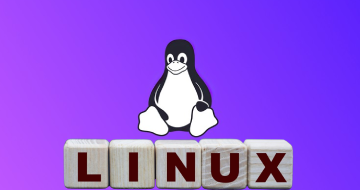
Complete Linux Training Course to Get Your Dream IT Job 2024

